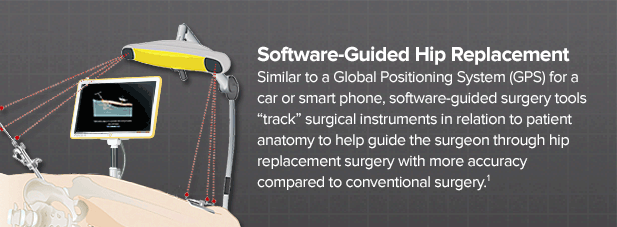
While hip replacement surgeries are commonly performed and are considered to be a highly successful and reliable orthopedic operation, surgeons often face several challenges during surgery.
For example, during minimally-invasive surgeries, the surgeon often has limited access to certain details of the patient’s anatomy, which can create additional challenges during surgery.
Poorly positioned implants may lead to:
In addition, as you may already know, the majority of hip implants have a limited life. The success of a revision or follow-up surgery relies on the quality and quantity of available bone. When a fracture or dislocation occurs, revision becomes even more complex. In cases where there is not enough viable bone, grafts or special components are needed.
There are many tools and technologies available to surgeons that offer assistance in minimizing the likelihood of these complications. Software-guided hip replacement surgery is an established and proven method to help overcome the challenges of accuracy and reproducibility1 in conventional hip replacement surgery, and may help your surgeon to:
Accurate alignment and stability of artificial hip components is critical to the overall function of your new joint and helping the joint replacement potentially last longer. Software-guided surgery systems support the surgeon and provide important information that may help to achieve more accurate placement of implants compared to conventional surgery.2, 3
The software-guided surgery components work like a car’s Global Positioning System (GPS) by continuously tracking surgical instruments to their desired destination in relation to your anatomy.
Software-guided surgery gives your surgeon additional visual guidance and measurement tools. The software also allows for planning and simulation of the joint replacement even before the first bone cut has been made. It can recommend the size and position of the implant based on your specific anatomy, helping to support proper alignment of the new implant for natural joint movement. Software-guided surgery enables the surgeon to quickly react to potential challenges or complications during surgery.
Get even more information about navigated hip surgery »